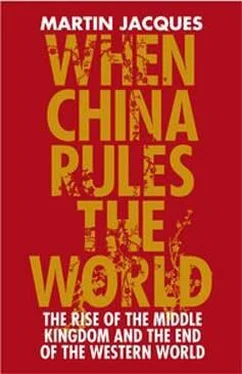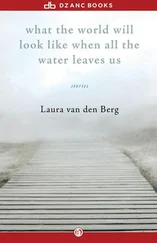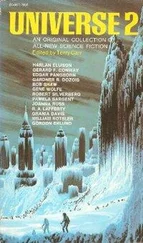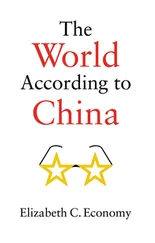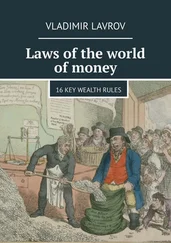There is another related sense in which China’s emergence is bound to change the international system as we know it. The European nation-states that constituted the original founding core of the international system were all, roughly speaking, of a similar kind: namely, in global terms, small to medium sized. Following the Second World War, the number and diversity of nation-states was dramatically transformed as a result of decolonization (and then again after 1989 with the break-up of the USSR). The second half of the twentieth century was dominated by the US and the USSR, which were both far larger than even the biggest European nation-states. Partly as a result, the West European states were encouraged to combine their power in what we now know as the European Union, a grouping of nation-states. It has become common to see such unions of nation-states as the way forward, ASEAN and Mercosur (a regional trade agreement between four South American countries) being further examples, though neither as yet involves any pooling of sovereignty. The American perspective, for obvious reasons, has invariably placed the major emphasis on the nation-state. But the rise of China and India threatens to transform the picture again. In one sense, of course, it marks the reassertion of the nation-state. These are no ordinary nation-states, however, but states on a gargantuan scale. If this century will increasingly belong to China and India, in conjunction with the United States, then it should also be seen as the Age of the Megastate. [700] [700] Martin Jacques, ‘Strength in Numbers’, Guardian , 23 October 2004.
This does not mean that unions of nation-states will go out of fashion, but their primary raison d’être is likely to be as a counterweight to the megastate, both the old (the United States) and especially the new (China and India).
Quite where this will leave the old Westphalian system is difficult to say. States of the scale, size and potential power of China and India will dwarf the vast majority of other countries. This will not be an entirely new phenomenon. During the Cold War, the United States and the Soviet Union both established unequal relations with their subordinate allies to an extent which frequently undermined or greatly detracted from the sovereignty of the latter. This is the case, in varying degrees, of the US ’s present relationship with many countries. But China and India are on a different scale even to the United States: China has more than three times the population and between them India and China comprise around 38 per cent of the world’s population. As both are still only at the earliest stages of their transformation, it is impossible at present to conceive what this might mean in terms of their relationship with other states. The Westphalian system may well survive the emergence of China and India as global powers, but it will certainly look very different from any previous stage in its history.
There is one other aspect of China’s emergence as a global power that is also novel. Hitherto, ever since the onset of industrialization in the late eighteenth century, the most powerful countries in the world have shared two characteristics. First, they have enjoyed one of the highest (if not the highest) GDPs of their time. Second, they have also had an extremely high GDP per head: the richest nations have also had the richest populations. That was true — in rough chronological order — of Britain, France, Germany, the United States and Japan. The only exception, arguably, was the USSR. That situation is about to change: China will share only one of these characteristics, not both. It already has a high GDP — the third highest in the world measured by market exchange rates. But even when it overtakes the United States in 2027, as predicted by Goldman Sachs, it will still have a relatively low GDP per head, and even in 2050 it will still only belong to the ‘upper middle group’ rather than the ‘rich club’ (see Figure 23). Welcome to a new kind of global power, which is, at one and the same time, both a developed — by virtue of the size of its GDP — and a developing country — by virtue of its GDP per capita.

Figure 23. Future income per capita of major countries.
The implications of a potential superpower being both a developed and a developing country are profound and multifarious. Previously the distinction between developed and developing countries was clear and unambiguous. Indeed between 1900 and 1960 there was a fundamental cleavage between those countries that industrialized in the nineteenth century and those that did not, a situation which persisted until the rise of the Asian tigers from the late fifties. This distinction between developing and developed will in future be more shaded. The continental-sized states, namely China and India, are likely to belong to both categories for many decades: their huge populations mean that they will continue to embrace very diverse levels of development and living standards within their borders. And they are in the process of being joined by other more populous developing countries such as Brazil and Indonesia, with Russia already belonging in this category.
The fact that China and India will be both developed and developing countries suggests that they will also enjoy diverse interests, namely the motives and concerns of both developed and developing countries: in effect, they will have a foot in both camps. Hitherto, trade relations have been dominated by the interests of the developed world on the one hand and the developing world on the other. Where will China and India fit in this game? Will they lean towards the developed world or the developing world, or both, depending on the issue involved? [701] [701] Interview with Yu Yongding, Singapore, 3 March 2006.
It is reasonable to assume that over the next twenty years or so, both will frequently make common cause with the developing world: this can already be seen in the role of and cooperation between China, India, Brazil and South Africa in the World Trade Organization.
In the longer run, though, this will change. Assuming that both China and India continue to enjoy rapid growth for some time to come, the centre of gravity of their interests and concerns is likely to shift steadily over time from the ‘developing’ sectors of their economies to the ‘developed’, a process which will be accompanied by the growing power of those associated with the more modern parts of their economies. This is already evident in China with the increasing power of entrepreneurs and the steady decline of the farmers. A byproduct of these trends might be to embed fundamental divisions in these countries between the developed and developing parts, disparities that are a function of historic differences, reinforced and accentuated by their relationship to the inequalities and dynamics of the global economy.
China will also share another characteristic with India as a major power. China was partially colonized and India was completely colonized. The club of advanced countries — those that began their industrialization in the nineteenth century or, in the case of Britain, earlier — were those that did the colonizing. The United States, of course, also started life as a colony, but because its settler population consisted of migrants from Europe, especially Britain, its relationship to Britain as an imperial power was very different to those colonies whose people were of a different race and culture. [702] [702] Kagan, Dangerous Nation , Chapters 1–4.
The US, moreover, was also later to acquire its own colonies. China and India will be the first major powers that were previously colonized and are composed of non-white races and cultures. In other words, China and India can identify with those who have been colonized in a way that the imperialist powers obviously cannot. This has greatly assisted China in its courtship of Africa, as we shall see in Chapter 9. Here is another powerful change in the texture and symbolism of global politics represented by the rise of China and, in this case, especially India. [703] [703] David C. Kang, ‘Getting Asia Wrong: The Need for New Analytical Frameworks’, International Security , 27: 4 (Spring 2003), p. 84.
Читать дальше
